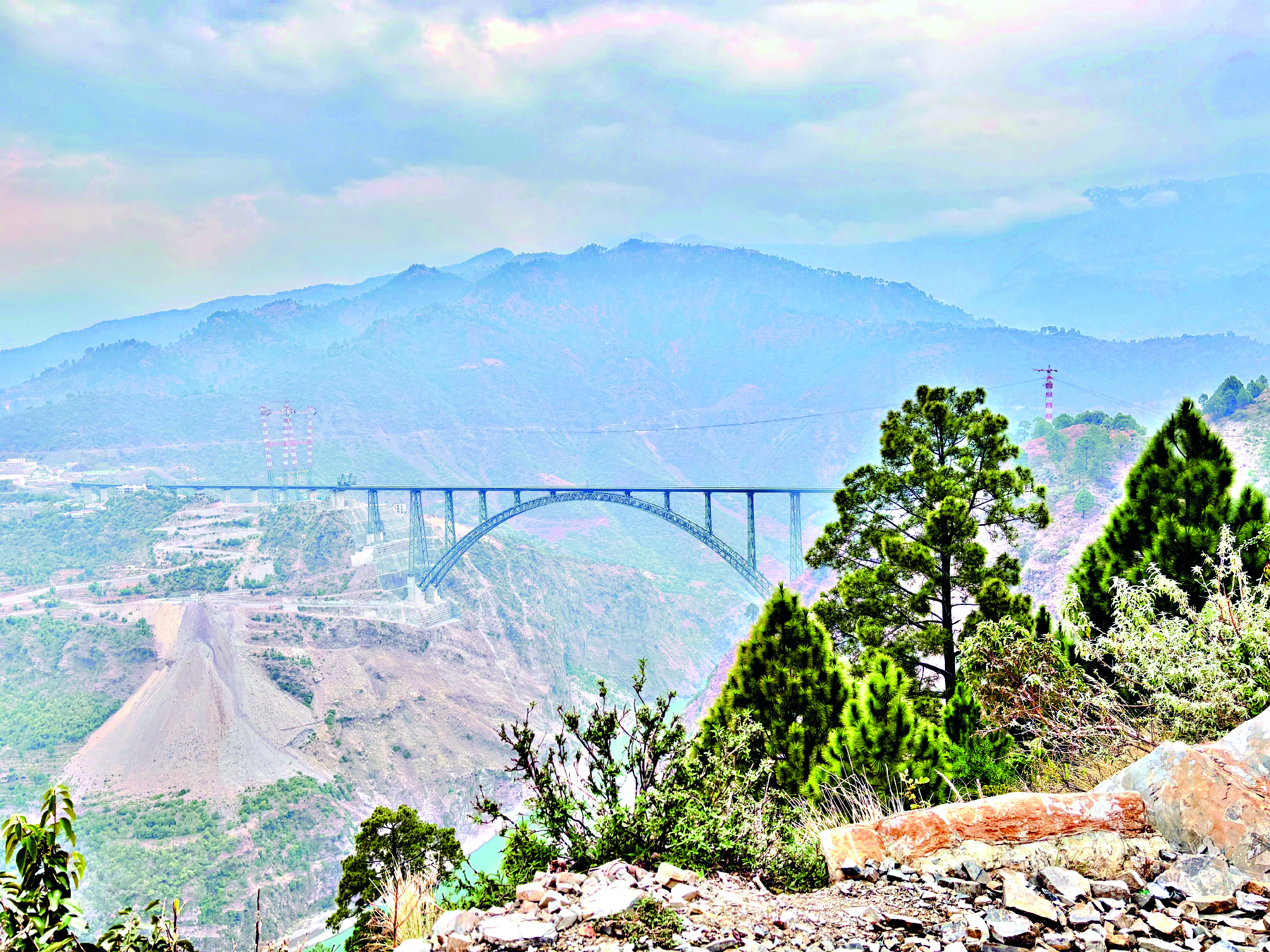Revolutionising connectivity in J&K: Indian Railways’ infrastructure marvels

Reasi: In a landmark achievement, Indian Railways has marked a historic milestone by successfully deploying the first electronic locomotive across the world’s highest Chenab railway bridge and the Anji Khad cable bridge on Sunday morning. This significant event underscores the progress of the ambitious Udhampur-Srinagar-Baramulla railway link project, a dedicated broad gauge railway line designed to connect the Kashmir Valley with the Indian Railway network.
Upcoming Inspection and Trial Run
The Commissioner of Railway Safety (CRS) is scheduled to conduct a comprehensive inspection this week, which will include a high-speed trial run from Banihal to Katra at 110 km/h. The final date for regular rail services through this route will be determined following the submission of the CRS inspection report.
The USBRL Project
The Udhampur-Srinagar-Baramulla railway link (USBRL) project aims to establish a reliable, all-weather transportation system for Jammu and Kashmir. Initiated by the central government in 1999 and declared a national project in 2002, the USBRL is a testament to engineering excellence in the challenging Himalayan terrain. This project is poised to be a game-changer for the region, fostering transport, trade, and tourism.
Engineering Marvels
The USBRL project represents the most challenging undertaking by Indian Railways since independence. It involves the construction of 38 tunnels spanning a total length of 119 km, including India’s longest transportation tunnels, the Sumber-Arpinchala T49 (12.75 km) and the Pir Panjal T-80 (11.2 km). Additionally, the project features 931 bridges with a combined length of 13 km, including the world’s highest railway bridge, the Chenab Bridge, and India’s first cable-stayed rail bridge, the Anji Bridge.
Electrification and Sustainability
The electrification of the 136 km Banihal-Baramulla section has been completed, enabling trains to operate on electric power instead of diesel. This shift aims to reduce fossil fuel usage in the ecologically sensitive Himalayan region, lower operational costs, and decrease the carbon footprint, positioning railways as a sustainable and eco-friendly mass transportation system.
Key Sections and Milestones
Jammu-Udhampur Section: Commissioned in April 2005, spanning 55 km.
Quazigund-Baramulla Section: Opened in three phases, totaling 118 km.
Anantnag to Mazhom (68 km) on October 11, 2008.
Mazhom to Baramulla (32 km) on February 14, 2009.
Quazigund to Anantnag (18 km) on October 28, 2009.
Banihal to Quazigund Section: Operational since June 26, 2013, including the 11.215 km Pir Panjal tunnel.
Udhampur to Katra Section: Inaugurated by Prime Minister Narendra Modi on July 4, 2014, spanning 25 km.
Katra to Banihal Section
This section involves extensive tunnelling with 27 main tunnels and eight escape tunnels, totalling 164 km. The Sumber to Arpinchala T49, at 12.75 km, is India’s longest transportation tunnel. The section also includes 37 bridges and seven stations, some of which are partially located in tunnels or on bridges.
Chenab Bridge: A Global Record
The Chenab Bridge, an arch bridge across the Chenab River in the Reasi district, holds the record for the highest railway bridge in the world. Constructed by the Konkan Railway Corporation at a cost of Rs 1,486 crore, the bridge spans 1,315 meters with a deck height of 359 meters above the river bed. The bridge’s design is expected to last 120 years and can support a maximum train speed of 100 km/h. The construction used 28,660 metric tons of steel, and the bridge is designed to withstand wind speeds of up to 266 km/h.
Social and Economic Impact
The project has significantly benefited the backward region of Reasi by constructing 205 km of approach roads, providing connectivity to previously inaccessible areas. Over 73 villages and 150,000 people have benefited from these roads. The project has also generated over 50 million man-days of employment and provided permanent jobs to 799 eligible landowners. Skill development training has been provided to artisans, and many beneficiaries are now employed.
Community and Welfare Initiatives
The project has contributed to social welfare by donating nine ambulances, 15 motorised wheelchairs, and organising free medical camps in Reasi and Ramban districts. A school has been constructed and another is under construction in Ramban district, each costing Rs 4 crore. Porta cabin toilet blocks have been constructed in 10 schools.
Anji Bridge: A Technological Marvel
The Anji Bridge, India’s first cable-stayed rail bridge, is located in the Reasi district. The bridge spans 725.5 meters and has been divided into four parts due to construction and site conditions. The bridge features 96 cables with lengths ranging from 82 meters to 295 meters and is designed to handle heavy storms and strong winds with a design wind speed of 213 km/h. The bridge includes an integrated monitoring system with numerous sensors to monitor its structural health.
Advanced Construction Techniques
The project has involved unique construction techniques and equipment, such as DOKA jump form shuttering and pump concreting systems, to increase efficiency and safety. The Department of Earthquake Engineering at IIT Roorkee has studied the seismotectonic framework of the region, and wind tunnels have been constructed to evaluate aerodynamic actions and investigate aeroelastic phenomena.
The USBRL project is set to revolutionise the transportation landscape of Jammu and Kashmir, providing a reliable and sustainable connection to the rest of India. This ambitious initiative not only enhances connectivity but also promises to uplift the region’s economy and improve the quality of life for its residents.



